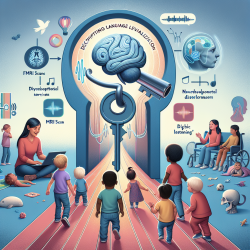Introduction
In the realm of health assessments, the 12-item Medical Outcomes Study Short-form Health Survey version 2 (SF-12v2) and the Veterans RAND 12-item Health Survey (VR-12) are pivotal tools. These surveys are designed to measure health-related quality of life (HRQL) and have been widely adopted in various populations. A recent study explored the differences between these two instruments in a Chinese population, providing insights that can enhance a practitioner's ability to make informed, data-driven decisions.
Key Findings from the Study
The study conducted a household survey of 500 Chinese adults in Hong Kong to compare the SF-12v2 and VR-12. The results indicated that while the mean scores of the physical component summary (PCS) and mental component summary (MCS) were similar at the group level, individual differences were notable. Specifically, the mean PCS scores were 50.3 for SF-12v2 and 49.6 for VR-12, while the MCS scores were 49.0 and 49.7, respectively. The paired differences were within the minimal clinical important difference (MCID) of 3 for group comparisons, but individual differences exceeded these limits.
Implications for Practitioners
For practitioners, understanding these differences is crucial. The study suggests that while both tools are effective for group-level assessments, caution should be exercised when interpreting individual scores. Here are some practical steps practitioners can take:
- Use Both Tools for Group Assessments: Since the SF-12v2 and VR-12 show equivalence at the group level, they can be interchangeably used for assessing group health outcomes.
- Exercise Caution with Individual Scores: Given the individual variability, practitioners should be cautious when using these tools for individual assessments. Consider using additional measures or qualitative assessments to complement these tools.
- Stay Informed on Norms and Scoring: Both instruments use different norms and scoring procedures. Practitioners should ensure they are using the most current norms and understand the scoring differences to make accurate assessments.
Encouraging Further Research
The study opens avenues for further research, especially in diverse populations and languages. Practitioners are encouraged to contribute to this body of research by exploring the applicability of these tools in their specific contexts. Additionally, investigating the structural equivalence and external validity of these instruments can provide deeper insights.
Conclusion
The SF-12v2 and VR-12 are valuable tools for assessing health-related quality of life, particularly in group settings. However, practitioners must be mindful of their limitations at the individual level. By integrating these insights into practice, practitioners can enhance their assessments and ultimately improve health outcomes for children and other populations.
To read the original research paper, please follow this link: Average and individual differences between the 12-item MOS Short-form Health Survey version 2 (SF-12 V.2) and the veterans RAND 12-item Health Survey (VR-12) in the Chinese population.










